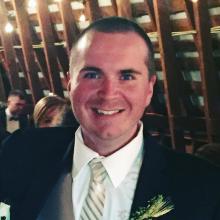4 Lessons from the STARWEST 2018 Keynote Presentations

With a week full of sessions, tutorials, training classes, and events, the STARWEST software testing conference had plenty of takeaways I’ll be able to use in my professional and personal life. Here are four lessons distilled from the conference’s keynote presentations.
Write Your Own Ending
With a storybook theme, Jennifer Bonine and Janna Loeffler teamed up for the opening keynote at STARWEST. The pair talked about testing challenges, how testers can write their own stories, and the role relationships play in success and failure.
Jennifer and Janna assured the community that manual testing jobs are here to stay. However, human testers need to put an emphasis on more creative test design and architecture and allow AI and test automation to drive repetitive tasks.
Lesson: Stop and think about where your testing story is going and how you play a part in its direction.
Communicate What’s Important
Jon Bach grew up in a family of pilots, so airplanes are a big part of his life. In his keynote at STARWEST, Jon compared a tester to an airplane’s black box: Much like a black box, testers know what happened, collect data, correlate theories, and are the first thing sought after a crash. Because of this, it’s important for testers to be able to withstand the impact of scrutiny.
It’s also important for testers to communicate with developers and program managers. Jon—who is a tester-turned-program manager—wants his testers at eBay to expose risks that threaten the brand, speak up when they’re worried, know how to ask questions in different ways, and communicate their needs with him.
Lesson: Testers must endure scrutiny, and the best way to anticipate that scrutiny is to communicate with their teams, managers, and users.
Nurture Your Community of Users
Dona Sarkar runs Microsoft’s Windows Insider program, which allows users to test prerelease builds of Windows previously only accessible to software developers. The Insiders program has seen so much success because of the community Dona and her team have nurtured.
Dona shared her blueprint—or Ten Commandments—for building your own community for users:
- Have a clear reason they should invest (that benefits them)
- Cocreate with them
- Be their advocate and celebrate their wins
- Share your stage
- Have inside jokes and symbols
- Meet regularly, either virtually or in person
- Be vulnerable and make it safe for them to be vulnerable
- Keep learning together
- Help them connect to one another
- Embrace shenanigans
Lesson: When you open software testing to your community, that community can help transform your product into something actual users will enjoy.
Test Your Tests
There are some thought leaders who think all testing should be automated and others who think none of it should be. Max Saperstone falls somewhere in the middle.
In the closing keynote at STARWEST, Max made his case for test automation but suggested that in order for automated testing to be successful, the automated tests themselves must be tested. Successful automated tests are simple, specific, compact, and follow a set of key rules: Establish your goals, test the correct things, follow good principles, follow good processes, validate your tests, and maintain your tests.
Lesson: Test automation can be used effectively if the automated tests are themselves tested.

